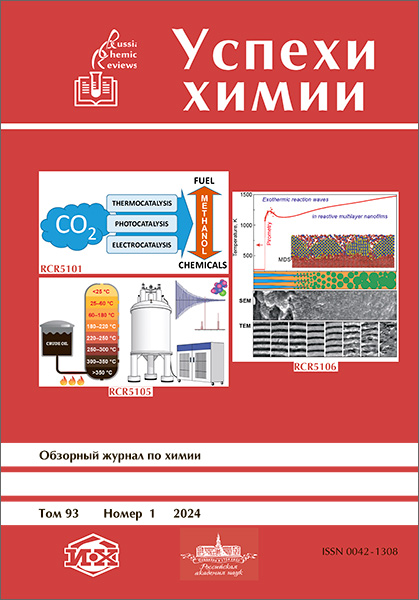|
This article is cited in 2 scientific papers (total in 2 papers)
Reactive multilayer nanofilms: time of scientific and technological maturity
A. S. Rogachevab
a National Research Technological University 'MISIS', Moscow, Russian Federation
b Merzhanov Institute of Structural Macrokinetics and Materials Science, Russian Academy of Sciences, Chernogolovka, Moscow region, Russian Federation

Abstract:
The review presents the results of recent research and the latest developments in the field of reactive multilayer nanofilms (RMNFs), which were first obtained in the mid-1990s and have now formed a special class of energetic materials produced by layer-by-layer deposition. This class includes M/Al systems (M = Ni, Ti, Zr, Pt, Pd), other bimetallic systems (Ni/Ti, etc.), M/Nm systems (M = Ti, Zr, Nm = Si, B, C) and thermite systems (Al/CuO, etc.) and continues to expand. The emergence of RMNFs stimulated the creation of new experimental diagnostic methods and computer models for fast physicochemical processes. It is shown that the reaction in the front of a self-propagating exothermic wave occurs in a time of the order of microseconds, which is determined by the rate of dissolution of a solid reactant in the melt of the second, low-melting reactant (usually Al) and by the rate of liquid-phase diffusion. The unique properties of reaction waves in RMNFs are used in novel technologies for bonding dissimilar materials.
The bibliography inncludes 160 references.
Keywords:
reactive multilayer nanofilms, structure, reaction mechanism, materials bonding.
Received: 19.10.2023
Citation:
A. S. Rogachev, “Reactive multilayer nanofilms: time of scientific and technological maturity”, Usp. Khim., 93:1 (2024), RCR5106; Russian Chem. Reviews, 93:1 (2024), RCR5106
Linking options:
https://www.mathnet.ru/eng/rcr4450https://doi.org/10.59761/RCR5106
|


| Statistics & downloads: |
| Abstract page: | 74 |
|






 Contact us:
Contact us: Terms of Use
Terms of Use
 Registration to the website
Registration to the website Logotypes
Logotypes








